AP Art: Yes, a class that cultivates creativity
April 14, 2015
Whenever someone mentions AP Art, people become confused and their eyebrows scrunch. They often respond with “We have that here?” or “Is that even a real class?” To answer all of North Cobb’s AP Art questions, read this guide to the class to better understand the mystery that is AP Studio Design.
AP Art serves as a college-level art course for the artists here at North Cobb High School. The class accepts all kinds of upper-level artists, no matter their choice in media. For example, North Cobb offers AP Photography, AP 2D Design, AP Sculpture, and AP Drawing.
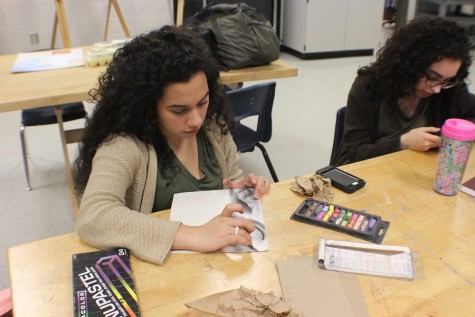
Junior Camila Mino and senior Sally Murtadhi practice skills.
Like all other AP classes, to pass AP Art, the artists must pass an exam. However, this exam consists of a 3-part portfolio of art due in May. Because of this, some students believe AP Art is easier than other classes because we do not have to take a four-hour formal written exam. Yes, instead, we basically take a semester-long art exam.
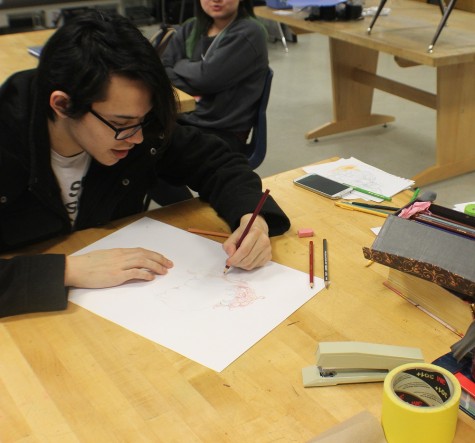
Senior Kalvin Schamerhorn draws.
The portfolio consists of three sections: concentration, breadth, and quality. To complete the 29 piece portfolio, students spend the entire semester making art and organizing their finished pieces into a coherent package.
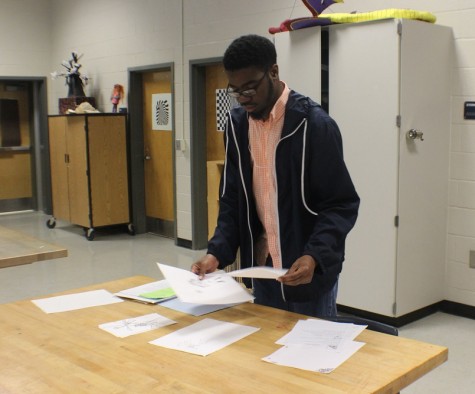
Senior Jawann Lawson prepares images.
The concentration section consists of 12 pieces that flow together with a similar style and deep meaning. These pieces require focus, consistency, and originality. This section pushes the AP students to find their artistic voice, a true struggle for many high school artists.
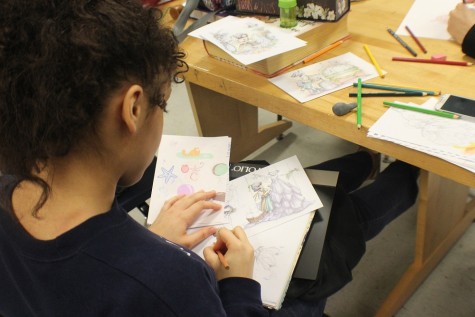
Senior Whitney Cameron draws.
The second section, breadth, also consists of 12 pieces. However, these pieces must show the artist’s ability to use all kinds of medias (color pencil, marker, graphite, paint, etc) and to study all kinds of subjects (faces, anatomy, still-life, abstract, etc.) The breadth section allows students to experiment with their art and hopefully find a new way to express themselves.

Seniors Annette Montero and Phoebe Graham collaborate.
The quality section consists of only five pieces. For this section, students mail their five best pieces to the AP exam judges. These pieces go under the most scrutiny as judges grade the students on their use of all aspects of art (media, subjects, the elements of art, the principles of art, etc.)
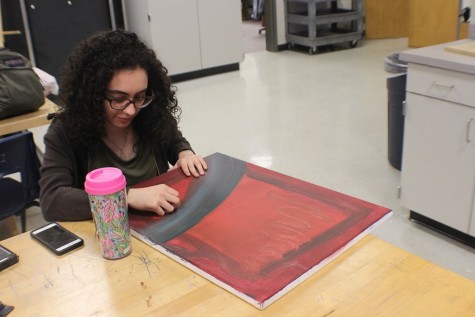
Senior Sally Murtadhi creates.
Although students must work incredibly hard to complete the entire portfolio, as a college course, their work is left up to them. This means students must control their own time management (in and out of class), their own brainstorming, and their own projects.
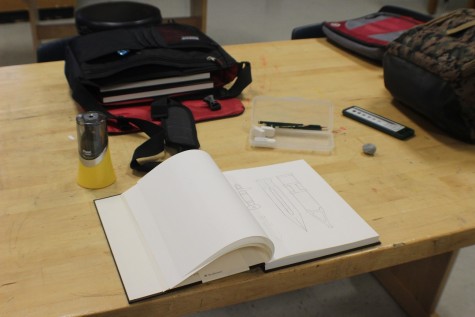
Senior Daniel Lee leaves his drawing book open for a peek inside.
Despite how independent the class may seem, students must bring two pieces to class every week for a class critique. Weekly critique allows the AP students to comment on other students’ art and possibly offer advice.

Senior Jordan Grubb shares out opinions for a critique.
Even though the class seems strenuous, it also serves as chance for the AP students to dedicate an hour and thirty minutes a day to their craft, meet other students who care about art, and discover their artistic identity.
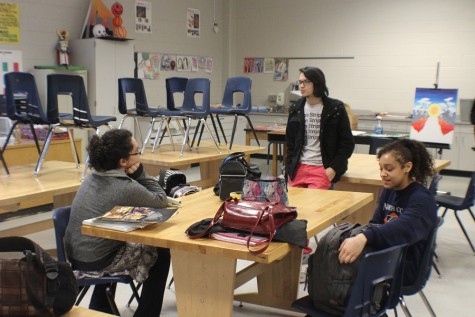
Seniors Ana Rivendeyra, Kalvin Schamerhorn, and Whitney Graham discuss.






